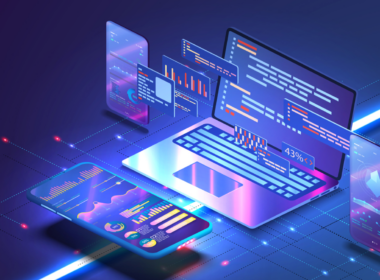Can America stay ahead in the AI race without bringing its allies along for the ride?
That’s the question at the heart of President Trump’s latest move. In July 2025, he signed an executive order launching the American AI Exports Program, a sweeping initiative designed to package and ship complete AI systems to friendly nations.
The goal is straightforward. By helping allies build their AI capabilities with American technology, the U.S. aims to set global standards while locking out competitors like China.
What we’re witnessing is a fundamental transformation in how Washington thinks about technology leadership. It’s Silicon Valley meets the Marshall Plan, and it could reshape tech alliances for decades.
Key Insights:
- Trump’s July 2025 executive order establishes the American AI Exports Program, packaging complete AI systems for allies to counter China’s influence and to establish U.S. technological standards globally, while reshaping decades of tech alliances.
- The strategy treats other nations as customers rather than partners, risking alliance strain. Some allies resist dependence on American infrastructure, especially after recent trade tensions, potentially pushing Europe closer to China.
- The program encourages collaboration among technology providers, including mid-sized firms, to form industry consortia capable of delivering comprehensive AI solutions. Small businesses become subcontractors without control over strategy, pricing, or profit distribution terms.
- A fundamental contradiction exists between years of tightening chip export controls to restrict China and now wanting to ship complete AI systems to dozens of countries, creating regulatory uncertainty that undermines business planning.
Inside the American AI Technology Full-stack Export Plan
In an effort to solidify its leadership in the global AI race, the U.S. government has introduced a structured initiative to promote the export of its advanced AI technologies.
The core of this effort is the American AI Technology Stack, a comprehensive package designed to provide end-to-end AI solutions to U.S. allies and partners.
This stack aims to ensure that America remains at the forefront of AI innovation, while also strengthening its geopolitical and economic ties worldwide.
Here’s a breakdown of what’s included:
1. Hardware and Data Systems
- AI Chips: The foundation of any AI solution, including high-performance processors capable of handling complex computations.
- Data Infrastructure: Systems that ensure data storage, management, and processing are efficient, secure, and scalable. This includes server farms and cloud computing solutions essential for AI operations.
2. AI Models
- Pretrained AI Models: Ready-to-deploy machine learning models across various industries like healthcare, logistics, and finance.
- Customizable Algorithms: Models that can be tailored to specific sectors, providing both general and specialized AI solutions.
3. Cybersecurity Measures
- Encryption and Security Protocols: Ensuring that the AI systems remain secure against cyber threats, a critical aspect in the age of data breaches and hacking.
- Secure Data Transmission: Safeguarding the integrity of information as it travels across networks, ensuring data privacy for all parties involved.
4. Sector-Specific Applications
- Healthcare: AI tools to enhance diagnostics, patient care, and administrative processes, aiming to reduce costs and improve outcomes.
- Agriculture: Precision farming technologies powered by AI that optimize resource usage, improve crop yields, and monitor livestock health.
- Transportation: Autonomous vehicle systems, predictive maintenance for infrastructure, and smart city traffic management solutions.
- Education: Adaptive learning systems, AI-driven tutoring, and curriculum optimization to improve outcomes in the classroom.
5. Support for Small Businesses
- Investment in AI Development: Funding and support to help small businesses integrate AI into their operations, thus fostering innovation across the U.S. tech sector.
- Infrastructure Access: Providing smaller players with access to the same powerful AI tools that larger corporations use, helping level the playing field in the global market.
6. Compliance and Export Controls
- Export Controls: Ensuring that sensitive AI technologies are shared responsibly, limiting their use in ways that could pose national security risks or support adversarial regimes.
- Global Standards: Promoting U.S. standards for AI governance, privacy, and ethical use, helping to set the global agenda for AI policy.
The Geopolitical Chess Match Behind the Policy
The timing isn’t coincidental. The Trump administration’s strategy frames AI as essential to “winning the AI race” against global competitors, especially China. It’s a direct response to Beijing’s aggressive push into AI development and their dominance in open-source models that many countries already use.
The Real Stakes
Whoever controls the largest AI ecosystem sets global AI standards and reaps broad economic and military benefits.
Think about what that means practically. If countries build their healthcare systems, transportation networks, and military infrastructure on Chinese AI, Washington loses influence. If they build on American systems, the U.S. maintains technological leverage for decades.
The Gamble Nobody’s Discussing
Trump is making an epic gamble that countries need AI and must choose between the U.S. and China. The administration believes it can leverage America’s current AI lead to lock allies into U.S. systems while attracting investment back home for critical infrastructure.
But here’s the complication. The plan defines the rest of the world primarily as a market where the U.S. must provide AI services from top to bottom, or China will.
That’s a customer relationship, not a partnership. And some allies aren’t thrilled about becoming dependent on American infrastructure, especially after recent trade tensions and tariff disputes.
What China Sees
Europe and China could now be talking more actively, following a “the trade enemy of my trade enemy is my friend” approach. Beijing isn’t sitting still. They’re accelerating their push toward technological self-reliance, and analysts suggest U.S. measures are actually speeding up China’s efforts to build autonomous AI capabilities.
The question isn’t whether America can build better AI. It’s whether Washington can maintain alliances while competing with Beijing for global influence.
What This Means for American Businesses
The executive order transforms AI competition into a profit center. Federal financing, diplomatic backing, and streamlined export approvals are all converging to help companies capture foreign markets before China does.
The Money on the Table
The Export-Import Bank has a total statutory authority of $135 billion, with over $100 billion available for AI-related projects. Diplomacy Action Group (EDAG) can mobilize direct loans, loan guarantees, equity investments, co-financing, political risk insurance, and credit guarantees. If you’re building AI infrastructure for foreign markets, the federal government can become your co-investor.
Who Can Actually Compete?
The Department of Commerce is launching AIexports.gov and establishing an integrated American AI export team, leveraging commercial service officers across the U.S. and globally. The State Department is bringing its ambassadors and foreign service officers into the effort. That’s diplomatic muscle behind your sales pitch.
But there’s a requirement. The program encourages industry-led consortia, but individual companies can still play a crucial role in contributing to AI solutions. Chip makers need to partner with cloud providers, cybersecurity firms, and application developers. Solo players need allies.
The Procurement Angle
Federal agencies are being directed to identify and eliminate regulatory and procurement barriers to AI innovation. Translation: government departments are being told to buy AI faster and with less red tape. Companies should prepare for Requests for Information and consider participating in workforce upskilling initiatives that the administration expects to fund.
The Risk Calculation
Building dedicated infrastructure for specific applications and countries requires upfront capital and market certainty that may not materialize. Companies typically build flexible systems. This program wants turnkey solutions for specific sectors and nations.
And here’s the strategic tension. If you provide everything from hardware to applications, there’s not much left for partners to build on. You’re locking in revenue but potentially limiting long-term ecosystem growth in those markets. The administration is betting that complete dependence beats collaborative development when competing with China.
The Export Control Paradox
Here’s the problem nobody’s saying out loud. The administration has spent years tightening export controls on advanced chips to slow China’s AI development. Now it wants to ship complete AI systems to dozens of countries.
Those two objectives don’t naturally align.
Advanced AI systems need cutting-edge semiconductors. The kind that are currently restricted from export to many nations under national security rules. The Commerce Department now has to thread a needle: determine which countries get full-stack AI packages without undermining the export control framework that keeps sensitive technology out of adversarial hands.
For businesses, this creates immediate uncertainty. You can’t build a proposal without knowing which markets are actually accessible. And “allies and partners” is deliberately vague language. Does that include countries with close trade ties to China?
Nations that haven’t taken clear positions on U.S.-China competition? The ambiguity makes long-term planning difficult.
There’s also a timing issue. Export control reviews take months. AI markets move in weeks. If your consortium spends a year getting approvals while a Chinese competitor offers similar capabilities with no restrictions, you’ve lost the deal regardless of federal financing.
The practical question for executives: does your target country already have access to the chips and infrastructure your package requires? If not, you’re not just selling AI. You’re navigating a regulatory maze that may not have clear answers yet.
Who Actually Benefits From This Program
The program aims to include small businesses, though the structure may present challenges in equal participation
Industry-led consortia encourage partnerships across the AI technology stack, boosting collaboration and innovation. A small cybersecurity firm can’t bid alone. A regional cloud provider can’t submit independently. You need relationships with chip manufacturers, data infrastructure companies, AI model developers, and sector-specific application builders.
Companies with existing partnerships may find it easier to navigate the program, but there are pathways for others to build the necessary collaborations. Nvidia, Microsoft, Google, Amazon, and Oracle have the scale and relationships to assemble these consortia quickly. They already work together on major projects and have the legal and compliance teams to navigate export controls.
Where Small Players Fit
While larger firms often lead consortia, smaller companies have opportunities to contribute specialized expertise as valuable partners. If you’ve built specialized healthcare AI or agriculture analytics, you become part of someone else’s consortium. That’s not necessarily bad. It’s access to deals you couldn’t finance alone, and federal backing reduces payment risk.
But you’re not setting terms. The prime contractor decides market strategy, pricing, and how profits split. Your specialized capability becomes a component in their larger package.
The Enterprise Calculation
For mid-sized and large companies, the question is whether to lead or join. Leading means assembling the consortium, managing relationships, and taking on compliance responsibility. You control the strategy but absorb the risk.
Joining means less control but also less exposure. If export approvals fall through or a target country shifts toward Chinese systems, you haven’t bet the company on this program.
Sector-Specific Realities
Hardware manufacturers are natural leaders here. They’re already navigating export controls and have government relationships. Software and application developers are natural joiners. You bring the sector expertise, they bring the infrastructure and financing access.
Cybersecurity firms sit in an interesting middle ground. Every package needs security, making you essential. But you’re rarely large enough to lead. That’s leverage in negotiations, but not control.
The Real Winners
Companies that already export AI technology and have established compliance frameworks win immediately. They’re adding federal financing to existing operations. Companies trying to break into international markets face a steeper learning curve, even with government support.
And here’s what matters most: the program rewards speed. Early consortia that submit strong proposals get first access to financing and diplomatic support. If you’re still figuring out partnerships while competitors are already negotiating with foreign governments, you’ve missed the advantage.
The question for business leaders isn’t whether this program creates opportunities. It clearly does. The question is whether your company can move fast enough and partner effectively enough to capture them before the window closes.
Building AI That Competes Globally
If you’re positioning for these opportunities, your AI capabilities need to meet international standards from day one. That means building with scale, security, and adaptability embedded from the start.
Codewave develops AI and ML solutions for companies competing in exactly this environment. We’ve served 400+ businesses globally, working with VC firms, startups, SMEs, and governments while building our own GenAI products. We understand what it takes to create AI systems ready for international deployment.
Our AI Development Approach:
- GenAI Solutions: We build custom generative AI tools that solve specific business problems, not generic implementations that require extensive customization later.
- Conversational AI & Personalization: Our conversational interfaces learn from every interaction, continuously improving accuracy and user experience over time.
- Intelligent Automation: We simplify complex workflows with AI that handles the repetitive work while flagging decisions that need human judgment.
- Predictive Analytics: Our systems analyze patterns across your data to forecast trends, demand shifts, and potential disruptions before they impact operations.
- Precision & Accuracy: We optimize for precision at every layer, from data pipeline design to model training to deployment monitoring.
- Adaptive Architecture: We architect solutions for maximum adaptability, so your AI scales with market demands and regulatory changes without requiring rebuilds.
- Rapid, Secure Deployment: We deliver rapid releases with enterprise-grade security, eliminating the deployment drama that delays time-to-market.
- Automatic Scalability: Our infrastructure automatically scales resources up or down based on actual usage, optimizing costs while maintaining performance.
We’re human-centric design practitioners who happen to be obsessed with emerging technology. That means we build AI that solves real problems for real users, not technology demonstrations that never leave the lab.
Connect with Codewave to discuss how we can accelerate your AI development roadmap and position your solutions for international markets.
FAQs
1.What is the American AI Exports Program?
A July 2025 initiative by Trump to export complete AI technology packages to allied nations, helping them build AI capabilities while countering China’s influence.
2. Who can participate in this program?
Companies must form industry-led consortia spanning chips, cloud services, cybersecurity, and applications. Large players like Nvidia and Microsoft have advantages; small firms typically join as subcontractors.
3. What’s included in the AI stack?
Hardware, AI chips, data infrastructure, pretrained models, cybersecurity protocols, sector-specific applications for healthcare/agriculture/transportation, and compliance frameworks.
4. What’s the main challenge?
Reconciling tight chip export controls meant to restrict China with shipping complete AI systems to multiple countries creates regulatory uncertainty and approval delays.
5. How does federal support work?
The Export-Import Bank offers $100+ billion in lending, while diplomatic resources and streamlined approvals help companies compete internationally before China captures those markets.
Codewave is a UX first design thinking & digital transformation services company, designing & engineering innovative mobile apps, cloud, & edge solutions.







